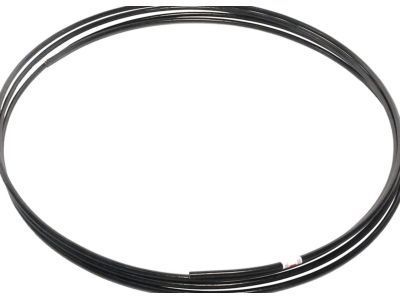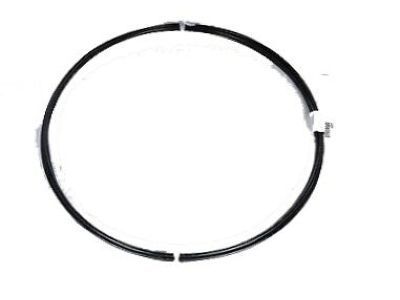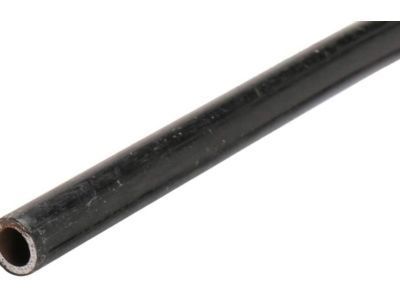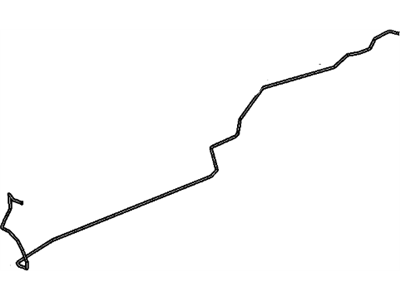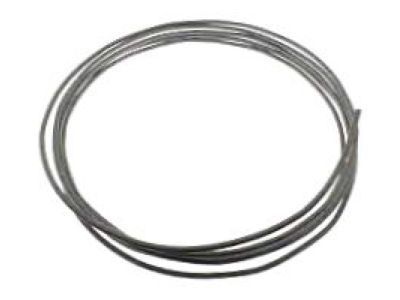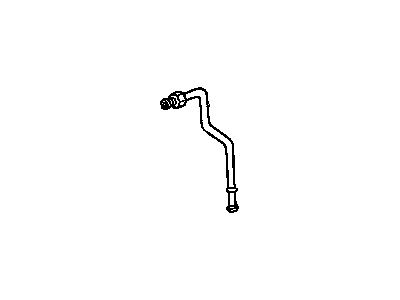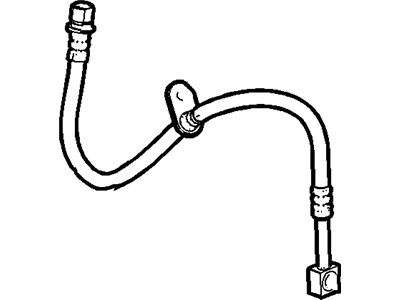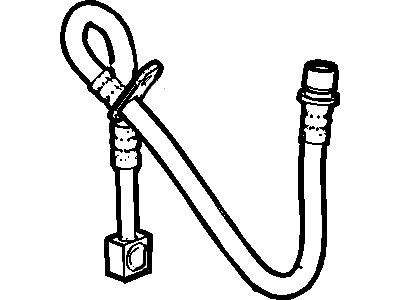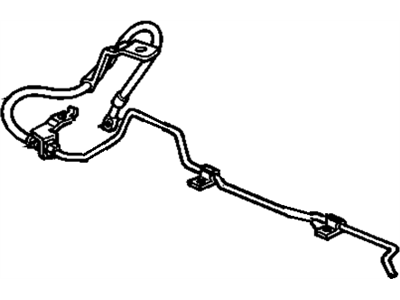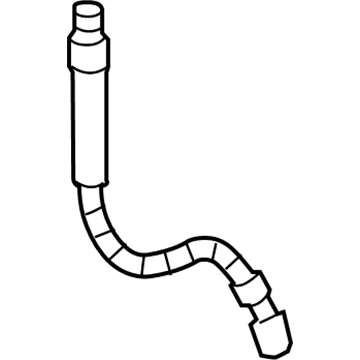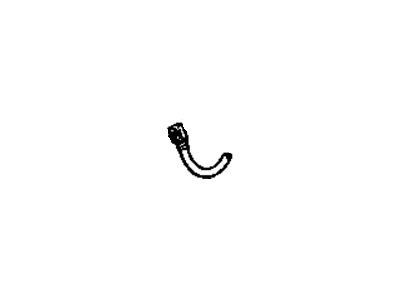
My Garage
My Account
Cart
Genuine Chevrolet Camaro Brake Line
Brake Hose- Select Vehicle by Model
- Select Vehicle by VIN
Select Vehicle by Model
orMake
Model
Year
Select Vehicle by VIN
For the most accurate results, select vehicle by your VIN (Vehicle Identification Number).
57 Brake Lines found
Chevrolet Camaro Pipe Asm,Brake (Steel)(1/4" X 16 Ft Roll)
Part Number: 88936298$91.98 MSRP: $180.88You Save: $88.90 (50%)Ships in 1-2 Business DaysChevrolet Camaro Pipe,Brake
Part Number: 88983905$68.37 MSRP: $134.44You Save: $66.07 (50%)Ships in 1-3 Business DaysChevrolet Camaro Hose Assembly, Front Brake
Part Number: 84237979$21.78 MSRP: $39.59You Save: $17.81 (45%)Ships in 1-2 Business DaysChevrolet Camaro Hose Assembly, Front Brake
Part Number: 84237974$18.06 MSRP: $32.87You Save: $14.81 (46%)Ships in 1-2 Business DaysChevrolet Camaro Hose Assembly, Front Brake
Part Number: 84237978$18.79 MSRP: $35.45You Save: $16.66 (47%)Ships in 1-2 Business DaysChevrolet Camaro Pipe,Brake (Bulk Tubing 5/16" 8Mm)
Part Number: 12541500$39.99 MSRP: $63.76You Save: $23.77 (38%)Ships in 1-3 Business DaysChevrolet Camaro Hose Asm,Front Brake
Part Number: 19173259$13.62 MSRP: $25.70You Save: $12.08 (47%)Ships in 1-3 Business DaysChevrolet Camaro HOSE ASM-FRT BRK
Part Number: 86538445$17.41 MSRP: $32.87You Save: $15.46 (48%)Ships in 1-2 Business DaysChevrolet Camaro Hose Assembly, Front Brake
Part Number: 84237976$15.90 MSRP: $29.99You Save: $14.09 (47%)Ships in 1-2 Business DaysChevrolet Camaro Hose Assembly, Front Brake
Part Number: 22925790$43.01 MSRP: $81.17You Save: $38.16 (48%)Ships in 1-2 Business DaysChevrolet Camaro Hose Assembly, Front Brake
Part Number: 22925809$45.17 MSRP: $85.23You Save: $40.06 (47%)Ships in 1-2 Business DaysChevrolet Camaro Pipe Assembly, Brake Pressure Mod Valve (Secondary)
Part Number: 84334735$25.16 MSRP: $47.48You Save: $22.32 (48%)Ships in 1-2 Business DaysChevrolet Camaro Hose Asm,Rear Brake
Part Number: 22163167$26.53 MSRP: $50.05You Save: $23.52 (47%)Ships in 1-2 Business DaysChevrolet Camaro Pipe Assembly, Brake Pressure Mod Valve (Primary)
Part Number: 22999195$29.61 MSRP: $53.83You Save: $24.22 (45%)Ships in 1-2 Business DaysChevrolet Camaro Pipe Assembly, Brake Pressure Mod Valve (Primary)
Part Number: 84334734$32.70 MSRP: $61.70You Save: $29.00 (47%)Ships in 1-2 Business DaysChevrolet Camaro Pipe Assembly, Brake Pressure Mod Valve (Secondary)
Part Number: 22999196$23.06 MSRP: $43.49You Save: $20.43 (47%)Ships in 1-2 Business DaysChevrolet Camaro Hose Assembly, Rear Brake
Part Number: 23441690$33.14 MSRP: $60.26You Save: $27.12 (45%)Ships in 1-2 Business DaysChevrolet Camaro HOSE ASM-RR BRK
Part Number: 86538450$16.22 MSRP: $26.98You Save: $10.76 (40%)Ships in 1-2 Business DaysChevrolet Camaro Hose Asm,Rear Brake Crossover
Part Number: 18032000$19.68 MSRP: $37.15You Save: $17.47 (48%)Ships in 1-3 Business DaysChevrolet Camaro Hose Asm,Rear Brake
Part Number: 19173455$38.79 MSRP: $73.18You Save: $34.39 (47%)Ships in 1-3 Business Days
| Page 1 of 3 |Next >
1-20 of 57 Results
Chevrolet Camaro Brake Line
Chevrolet Camaro Brake Line is another key part of the hydraulic brake system that through hydraulic lines transports brake fluid from the master cylinder to the brake calipers and or wheel cylinders in case of disc and drum brakes respectively. Through use of a mechanical pressure, converting it to hydraulic pressure the Brake Line helps the pads and shoes make contact with the rotors and drums to stop the vehicle. Through the many years various generations of the Camaro have used different varieties of Brake Lines, just the same as the main purpose of the brake lines are somewhat different in construction materials and styles. Still, irrespective of the type, the Brake Line is a critical component in the provision of safety and efficiency of the Chevrolet Camaro in use.
Each OEM Chevrolet Camaro Brake Line we offer is competitively priced and comes with the assurance of the manufacturer's warranty for the part. Furthermore, we guarantee the speedy delivery of your orders right to your doorstep. Our hassle-free return policy is also in place for your peace of mind.
Chevrolet Camaro Brake Line Parts Questions & Experts Answers
- Q: What is the importance of inspecting flexible brake hoses and brake line every six months on Chevrolet Camaro?A:About every six months, it is important to inspect the flexible hoses that connect the steel brake lines with the front and rear brake assemblies for any cracks, chafing, leaks, blisters, or other damage. This inspection should be done with the vehicle raised and securely placed on jackstands, using a light and mirror for a thorough check. If any of the above defects are found, the hose should be replaced with a new one. To remove a brake hose, clean away any dirt from the ends and unscrew the tube nut with a flare-nut wrench. Then remove the bolt(s) or clip(s) securing the hose to the body. Disconnect the hose from the caliper, discarding the sealing washers, and attach the new hose using new sealing washers. Make sure the hose isn't twisted and check for any contact with suspension or steering components. Bleed the brake system after installation. When replacing brake lines, use the correct parts and avoid using copper tubing. Prefabricated brake lines with flared tube ends and fittings can be bent to the proper shapes using a tubing bender. Ensure the new line is well supported in the brackets and has enough clearance from moving or hot components. After installation, check the master cylinder fluid level, add fluid if necessary, bleed the brake system, and test the brakes carefully before normal operation of the vehicle.
Related Chevrolet Camaro Parts
Browse by Year
2024 Brake Line 2023 Brake Line 2022 Brake Line 2021 Brake Line 2020 Brake Line 2019 Brake Line 2018 Brake Line 2017 Brake Line 2016 Brake Line 2015 Brake Line 2014 Brake Line 2013 Brake Line 2012 Brake Line 2011 Brake Line 2010 Brake Line 2002 Brake Line 2001 Brake Line 2000 Brake Line 1999 Brake Line 1998 Brake Line 1997 Brake Line 1996 Brake Line 1995 Brake Line 1994 Brake Line 1993 Brake Line 1992 Brake Line 1991 Brake Line 1990 Brake Line 1989 Brake Line 1988 Brake Line 1987 Brake Line 1986 Brake Line 1985 Brake Line 1984 Brake Line 1983 Brake Line 1982 Brake Line
